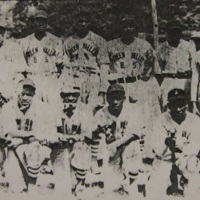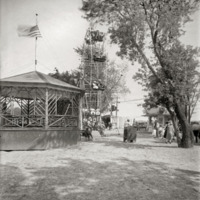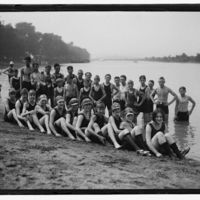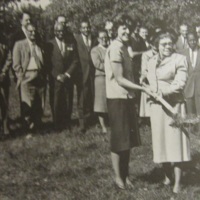Segregated Recreation in Arlington
Throughout the decades of the late-nineteenth and early-twentieth centuries housing, recreation, and indeed life generally became increasingly segregated across the county, state, and South. Lots of racially restrictive laws and customs centered on socialization because many feared that interactions across the color line were a threat to the kind of social, political, and cultural life which some white leaders wanted to impose. This resulted in segregated recreational facilities where white facilities were sponsored by public and private institutions, and Arlington’s organized black community created institutions for themselves. These segregated facilities remained in place through de jure and de facto measures through the 1960s.
One of Arlington’s earliest formally segregated recreation spaces was Luna Park. Opened in 1906, Luna Park was an amusement park which featured water rides, side shows, and animal acts.
In response to a lack of services provided by public and private entities, Arlington’s black communities and institutions provided their own youth and family activities. They sponsored sports activities at community parks like Peyton Field, an active athletics venue for black residents in Nauck (formerly Green Valley). Here residents played sports like baseball. Baseball was so popular that Nauck became home to the semi-professional Black Sox African American baseball team who toured throughout the east coast. These social and cultural developments helped to insulate the community from negative outside influences during the era of segregation.
In the 1920s Arlington had a Bathing Beach along the Potomac River which featured swimming, concessions, canoes, and a ferris wheel. In the 1920s and 1930s swimming facilities became popular across the United States. But almost all of these facilities were whites only spaces, as was the case for Arlington’s Bathing Beach.
Because the Bathing Beach was segregated African American children had to create their own place to swim. County resident James "Jimmy" E. Taylor recalled that black children swam in a "creek out on Route 50... called 'Blue Man Junction.'" Though both Blue Man Junction and the Bathing Beach had guests swim in natural waters, rather than man-made pools, the Bathing Beach for white guests was far safer because it was a formal swimming area with a lifeguard.
While white youths in Arlington had access to swimming facilities since the 1920s, in the 1960s Arlington’s black children still did not have access to swimming pools. Cultural organizations gave black residents access to services and social activities that would not be available to them within the white community. In 1949 black residents opened the Veteran’s Memorial Branch YMCA to provide social and recreational activities for Arlington’s black youth. Through active fundraising campaigns the YMCA opened a swimming pool, the county’s first pool open to black children in the mid-1960s so that they could finally have access to a safe swimming space.




